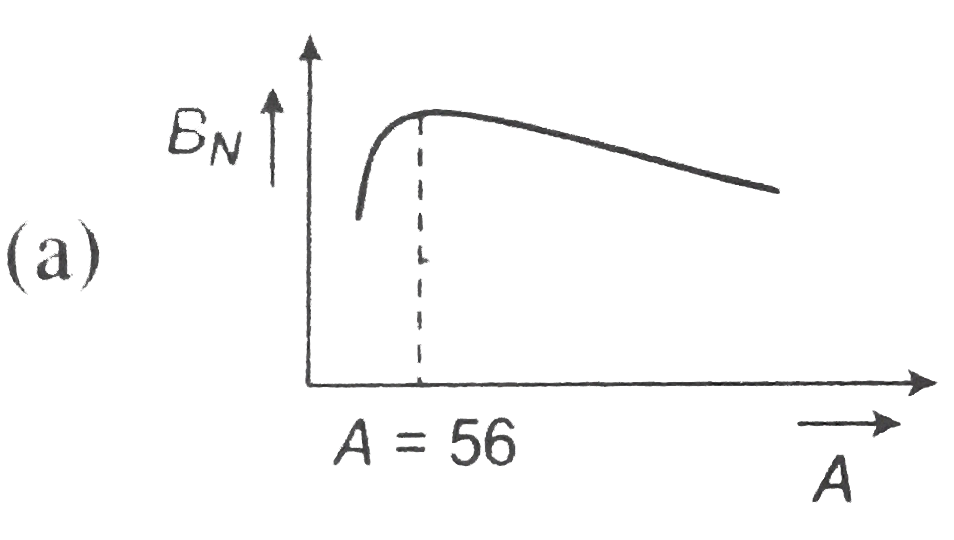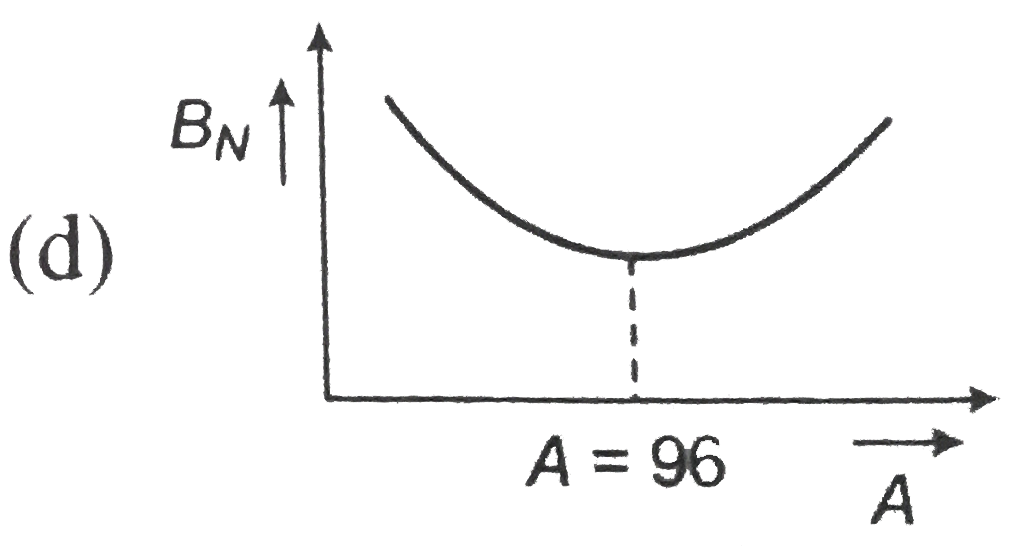Draw a plot of the binding energy per nucleon as a function of mass number for a large number of nuclei , 2≤A≤240 . How do you explain the constancy of binding energy per nucleon in the range 30<A<170 using the property that nuclear force is short-ranged ?
To solve the problem, we will follow these steps:
Step 1: Understanding Binding Energy Per Nucleon
The binding energy per nucleon is defined as the total binding energy of a nucleus divided by the number of nucleons (protons and neutrons) in that nucleus. It is a measure of the stability of the nucleus.
Step 2: Plotting the Graph
1. X-axis: Mass number (A) ranging from 2 to 240.
2. Y-axis: Binding energy per nucleon (in MeV).
3. Data Points: Collect data for various nuclei within the specified mass number range. This data can be obtained from nuclear physics tables or literature.
Step 3: Analyzing the Graph
1. For A < 30: The binding energy per nucleon changes sharply. This indicates that lighter nuclei have varying stability and binding energies.
2. For 30 < A < 170: The binding energy per nucleon appears to be relatively constant. This suggests that nuclei in this mass range have similar stability.
3. For A > 170: The binding energy per nucleon starts to decrease again, indicating that heavier nuclei become less stable.
Step 4: Explanation of Constancy in Binding Energy
1. Short-Range Nuclear Force: The nuclear force that holds nucleons together is short-ranged, meaning that each nucleon primarily interacts with its nearest neighbors.
2. Impact on Binding Energy: As the mass number increases, the number of nucleons increases, but the short-range nature of the nuclear force means that each nucleon contributes similarly to the binding energy. Thus, the binding energy per nucleon remains relatively constant in the range of 30 < A < 170.
Final Step: Conclusion
The constancy of binding energy per nucleon in the range of mass numbers from 30 to 170 can be attributed to the short-range nature of the nuclear force, which ensures that each nucleon interacts primarily with its immediate neighbors, leading to a stable binding energy across this range.
---
The binding energy per nucleon is defined as the total binding energy of a nucleus divided by the number of nucleons (protons and neutrons) in that nucleus. It is a measure of the stability of the nucleus.
1. X-axis: Mass number (A) ranging from 2 to 240.
2. Y-axis: Binding energy per nucleon (in MeV).
3. Data Points: Collect data for various nuclei within the specified mass number range. This data can be obtained from nuclear physics tables or literature.
1. For A < 30: The binding energy per nucleon changes sharply. This indicates that lighter nuclei have varying stability and binding energies.
2. For 30 < A < 170: The binding energy per nucleon appears to be relatively constant. This suggests that nuclei in this mass range have similar stability.
3. For A > 170: The binding energy per nucleon starts to decrease again, indicating that heavier nuclei become less stable.
1. Short-Range Nuclear Force: The nuclear force that holds nucleons together is short-ranged, meaning that each nucleon primarily interacts with its nearest neighbors.
2. Impact on Binding Energy: As the mass number increases, the number of nucleons increases, but the short-range nature of the nuclear force means that each nucleon contributes similarly to the binding energy. Thus, the binding energy per nucleon remains relatively constant in the range of 30 < A < 170.
The constancy of binding energy per nucleon in the range of mass numbers from 30 to 170 can be attributed to the short-range nature of the nuclear force, which ensures that each nucleon interacts primarily with its immediate neighbors, leading to a stable binding energy across this range.
Topper's Solved these Questions
- XII BOARDSBook:XII BOARD PREVIOUS YEAR PAPER ENGLISHChapter:XII BOARDSExercise:SET -II
Explore 9 Videos
- XII BOARDSBook:XII BOARD PREVIOUS YEAR PAPER ENGLISHChapter:XII BOARDSExercise:SET -III
Explore 4 Videos
- XII BOARDSBook:XII BOARD PREVIOUS YEAR PAPER ENGLISHChapter:XII BOARDSExercise:SET-III DELHI BOARD
Explore 10 Videos
- SAMPLE PAPER 2019Book:XII BOARD PREVIOUS YEAR PAPER ENGLISHChapter:SAMPLE PAPER 2019Exercise:SECTION D
Explore 6 Videos
Similar Questions
Average binding energy per nucleon over a wide range is
View SolutionThe curve of blinding energy per nucleon as a function of atomic mass number has a sharp peak for helium nucleus. This implies that helium.
View SolutionThe curve of blinding energy per nucleon as a function of atomic mass number has a sharp peak for helium nucleus. This implies that helium.
View SolutionThe curve of blinding energy per nucleon as a function of atomic mass number has a sharp peak for helium nucleus. This implies that helium.
View SolutionThe graph between the binding energy per nucleon (E) and atomic mass number (A) is as-
View SolutionUsing the curve for the binding energy per nucleon as a function of mass number A, state clearly how the release in energy in the processes of nuclear fission and nuclear fusion can be explained.
View SolutionAs the mass number A increases, the binding energy per nucleon in a nucleus.
View SolutionThis binding energy per nucleon for the parent nucleus is E1 and that for the daughter nuclei is E2. Then
View Solution(a) Draw the plot of binding energy per nucleon (BE/A) as a function of mass number A. Write two important conclusions that can be drawn regarding the nature of nuclear force.
(b) Use this graph to explain the relase of energy in both the processes of nuclear fusion and fission.
(c) Write the basic nuclear process of neutron undergoing β-decay. Why is the detection of neutrinos found very difficult?
View SolutionThe dependence of binding energy per nucleon, BN on the mass number, A is represented by.
(a) , (b)
, (b)  ,
,
( c) , (d)
, (d)  .
.
View Solution